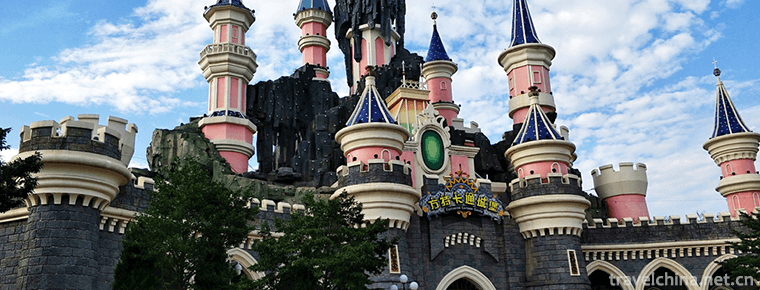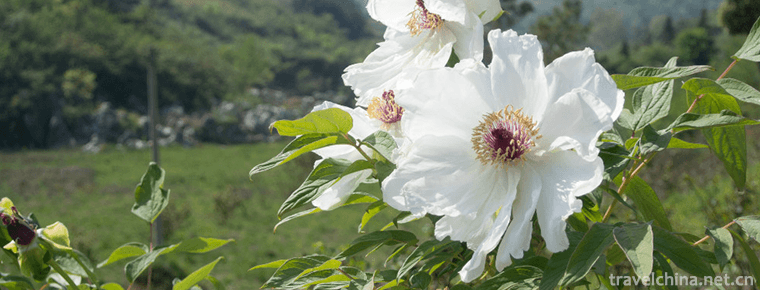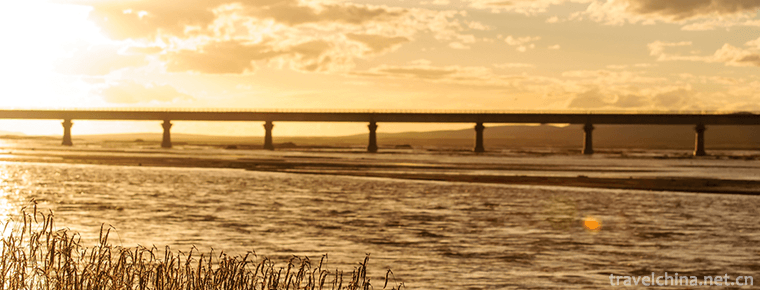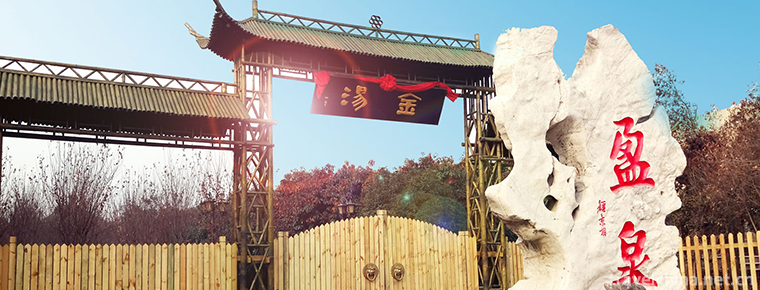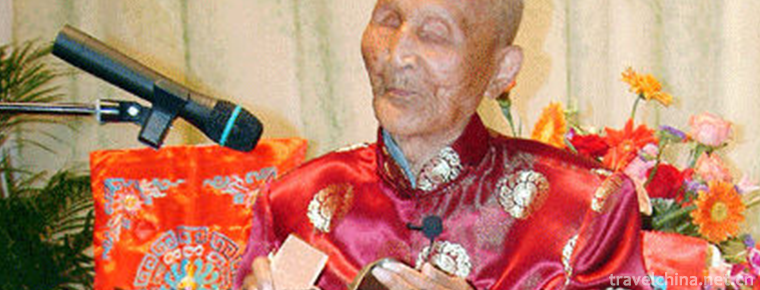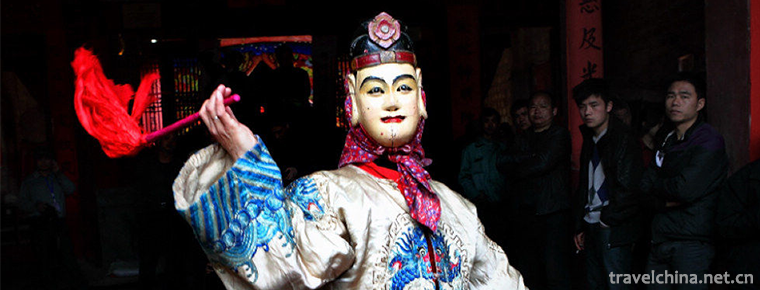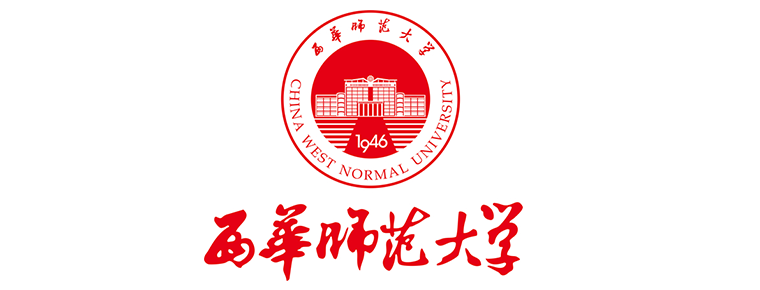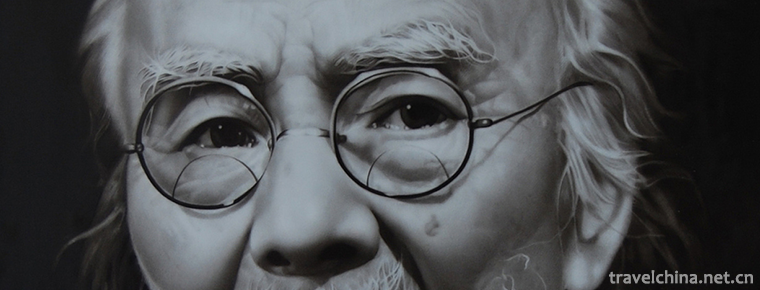Laiwu Campaign Memorial
Laiwu Campaign Memorial
Laiwu Campaign Memorial Hall is situated on the Huangshan Mountain in Laiwu District, Jinan City. It covers an area of 45,000 square meters and has a building area of more than 8,000 square meters. It is inscribed by Chi Haotian. The Laiwu Campaign Memorial Hall is composed of three main buildings, the Revolutionary Martyrs Memorial Tower, the Exhibition Hall and the Panoramic Gallery. The Revolutionary Martyrs Memorial Tower is 19 meters high and made of granite, which is one of the 100 key monuments in China.
Introduction to Scenic Spots
The exhibition hall has five exhibition halls with exhibition boards covering more than 700 square meters. The name of the exhibition hall is inscribed by Suyu. The panorama is 17 metres high, 120 metres long and 1100 square metres shaped on the ground. It simulates sound and natural light. It has an electric rotating stand, which integrates sound, light, electricity and shape. It adopts vacuum illusion, strict visual perspective and local exaggeration. It creates visual reality and creates infinite reverie in limited space.
Laiwu Campaign Memorial Hall has reasonable layout, magnificent architecture, beautiful environment, vivid and detailed information and advanced exhibition means. It is an ideal position for political and ideological education and tourism.
The Laiwu Campaign is a glorious example of mobile warfare in the history of the Chinese People's Liberation Army and one of the 100 classic warfare cases in the world military history. The films "South Expedition, North War" and "Red Sun" were all shot in the original form of the Laiwu Campaign. Laiwu Campaign Memorial Hall was rebuilt in 1997 on the basis of the former Mausoleum of Laiwu Revolutionary Martyrs. In 2007, in order to commemorate the 60th anniversary of the victory of the Laiwu Campaign, the Laiwu Municipal Committee and the Municipal Government decided to invest more than 40 million yuan to upgrade the Laiwu Campaign Memorial Hall in an all-round way. The museum is inscribed by General Chi Haotian, former Vice Chairman of the Central Military Commission, State Councilor and Minister of Defense.
Structural layout
Essential information
Laiwu Battle Exhibition Hall is located on the left side of the memorial tower. It is a two-storey arc-shaped building with an area of 3000 square meters. It has a sequence hall and four exhibition rooms. Four exhibition rooms are equipped with a sandbox 6 meters long and 4 meters wide, four physical exhibition stands and 66 exhibition cabinets. The exhibition boards cover an area of 704 square meters. There are 536 photos, charts, 168 books and materials, 279 cultural relics and 77 inscriptions and paintings by state leaders. At the same time, a film and television hall was set up to broadcast films related to the Laiwu Campaign, which greatly improved the educational effect of the memorial hall. Laiwu Campaign Memorial Hall consists of four departments with 26 staff, including 10 commentators. Every year, 100,000 people go to the memorial hall to hold such activities. Among them, there are more than 35,000 teenagers.
Exhibition Hall 1
The military deployment and pre-war forms of the two sides before the battle of Laiwu in 1946 were shown to the public through pictures, texts and materials, which reproduced the military operation process of the Communist Army abandoning Linyi and encircling and annihilating Li Xianzhou Group at that time.
Exhibition Hall II
The second stage of the Laiwu Campaign, the "encirclement and annihilation of the northern part of the city", was shown to the public with a large number of real pictures and articles. It reproduced the repressive battles carried out by the Communist Army to cooperate with the main battlefield, such as the "blocking battles on the southern line of Linyi", "the restraining battles of Liu and Deng armies", and the battles carried out along the Jiaoji Railway in order to expand the battle results, and analyzed in detail The important influence of the bureau.
Third exhibition hall
A large number of clear pictures and complete physical objects were used to introduce to the public the pre-support movement launched by the masses of the Liberated Areas before and after the Laiwu Campaign for the victory of the Campaign, which reproduced the relatives of the soldiers and civilians during the war and reflected the glorious tradition of the people in the old revolutionary areas before they supported the army.
Fourth exhibition hall
The Hall of Heroes focuses on the pictures of heroes who fought in the battle of Laiwu for the victory of the battle and for the cause of people's liberation, and who cooperated actively, forgetting to die and supporting the front with all their strength.
Commemorative significance
The battle of Laiwu was a famous battle held in Laiwu in 1947 under the command of Marshal Chen Yi, General Suyu and Tan Zhenlin. This battle created a glorious example of wiping out 60,000 people from seven divisions in a mobile battle and won a major victory. West of the memorial tower is the ashes hall for martyrs. Green pines and cypresses are planted around them. It is an ideal place for patriotism education, revolutionary traditional education, spiritual civilization education and tourism.
The bronze statue of Chen Yi was built in May 1999. It is 3,5 meters high and weighs 3 tons. It was made by Mr. Zuo Yaoguo, a famous Chinese sculptor, with a donation of 190,000 yuan from Mr. Xu Fugen, a private entrepreneur in Shanghai. "Marshal Chen Yi" is inscribed by Chi Haotian, Vice Chairman of the National Military Commission.
The Memorial Tower of Revolutionary Martyrs is located on the top of Huangshan Mountain. It is 19.8 meters high and 8.15 meters long at the bottom of the square tower. It is made of granite from Mount Tai. It symbolizes that the revolutionary martyrs who died in Laiwu Campaign are as high as Mount Tai. The seven gold characters of the "Revolutionary Martyrs Memorial Pagoda" on the sunny side of the pagoda are Mao Zedong's handwriting, while the inscriptions on the shade of the pagoda are inscriptions in Li scripts. The whole Memorial pagoda is concise and elegant with prominent theme.
Standing on the revolving stand can make you feel as if you are in the revolutionary artillery fire, smoke billowing fire, giving people a sense of immersion and excitement, with a strong artistic appeal and high artistic appreciation value.
There are only a dozen panoramic galleries of this size in the world and four in China. Since 2017, it has been continuously appraised as "National Patriotic Education Demonstration Base", "National Youth Education Base", "National Key Revolutionary Martyrs Memorial Building Protection Unit" and "AAAA" level tourist attractions.
Ticket information
Tickets: Free with valid certificates
Opening hours: 8:00 - 18:00
Traffic survey
Take No. 9 bus terminal to Laiwu Campaign Memorial Station, or take No. 10 and No. 8 bus to get off to 200 meters north of Laiwu Campaign Memorial Station.







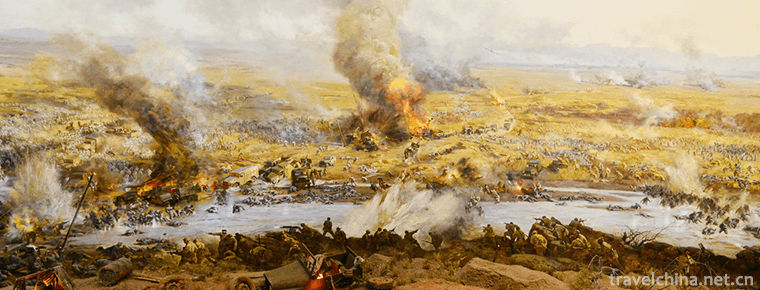
-
Fang te tourist area
Fang te tourist area is elaborately built by Huaqiang Fontewen Technology Group. It is a comprehensive leisure tourism resort integrating theme parks.
Views: 185 Time 2018-12-08 -
Yashan Huahai Stone Forest
Yashan Huahai Stone Forest Tourist Area, located in Nanling County, Wuhu City, Anhui Province, is one of the important scenic spots in Anhui's "two mountains and one lake" tourism economic c.
Views: 160 Time 2018-12-20 -
Rob Village
Located 35 kilometers southwest of Yuli County, Luobu Village is 85 kilometers south of Korla City. The village covers 72 square kilometers and has more than 20 families.
Views: 186 Time 2019-02-06 -
Yangtze River Source of Tuotuo River
Tuotuo River: Located in Tanggula Mountain Town, Southern Region of Golmud City, Qinghai Province, it is the West source of the Yangtze River, south of the Hoh Xili Mountains. .
Views: 212 Time 2019-02-22 -
Xinyingtai Eco Spa Resort
Yingtai Eco-Hot Spring Resort (Eco-Park) is located on the parallel road of Tengzhou City, Shandong Province. It is a comprehensive service enterprise integrating eco-catering.
Views: 179 Time 2019-02-26 -
Sing the news
Singing news is a traditional local opera popular in eastern Zhejiang, especially in Fenghua, Beilun, Zhenhai, Yinzhou and Xiangshan. Singing news has a long history, about a hundred years ago.
Views: 200 Time 2019-04-16 -
nuo dance
In the traditional Chinese civilization, "Nuo" is a social and cultural phenomenon with strong religious and artistic color, which has a long history and is widely popular in the Han nationa.
Views: 146 Time 2019-06-08 -
China West Normal University
Xihua Normal University is a key university in Sichuan Province. The school was founded in 1946 and began at the National Northeast University during the Anti-Japanese War. At the beginning of the Ant.
Views: 215 Time 2019-08-31 -
Zigong Salt History Museum
Zigong Salt History Museum is located in the center of Zigong, Sichuan Province. It was built in 1959. It is one of the earliest professional museums in the history of Chinese museum development. It is still the only Museum of salt history in China. On May 18, 2017, it was promoted to the third batch of national first-class museums. .
Views: 166 Time 2020-10-15 -
Fobao scenic spot
Fobao scenic spot, located 128 kilometers southeast of Sichuan Province, is located in the southern edge of Sichuan Basin. It is a primeval forest area at the tail of the North vein of Dalou mountain. It covers an area of 380 square kilometers. It has the characteristics of mountain, water, stone and forest. It is a subtropical humid climate with superior natural conditions and well preserved vegetation..
Views: 171 Time 2020-10-16 -
Guangyuan history and culture
"Guangyuan daughter's day, women swim in the river bay", this is a kind of folk cultural activities, this is the chapter described by Guangyuan daughter's day. On the first daughter's day in 1988, the water area of Jialing River in front of huangze temple was.
Views: 136 Time 2020-12-15
